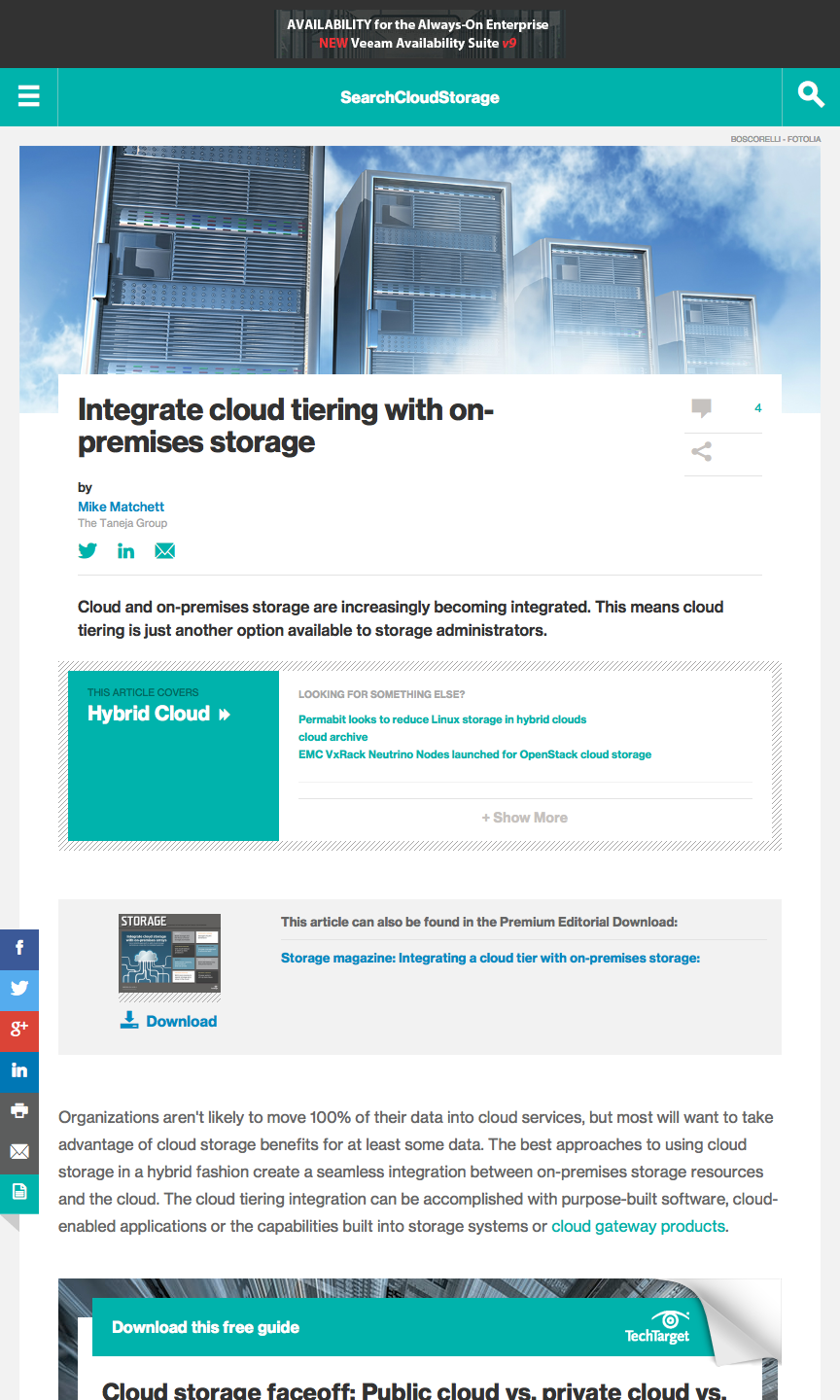Integrate cloud tiering with on-premises storage

An IT industry analyst article published by SearchCloudStorage.
 Cloud and on-premises storage are increasingly becoming integrated. This means cloud tiering is just another option available to storage administrators. Organizations aren’t likely to move 100% of their data into cloud services, but most will want to take advantage of cloud storage benefits for at least some data. The best approaches to using cloud storage in a hybrid fashion create a seamless integration between on-premises storage resources and the cloud. The cloud tiering integration can be accomplished with purpose-built software, cloud-enabled applications or the capabilities built into storage systems or cloud gateway products.
Cloud and on-premises storage are increasingly becoming integrated. This means cloud tiering is just another option available to storage administrators. Organizations aren’t likely to move 100% of their data into cloud services, but most will want to take advantage of cloud storage benefits for at least some data. The best approaches to using cloud storage in a hybrid fashion create a seamless integration between on-premises storage resources and the cloud. The cloud tiering integration can be accomplished with purpose-built software, cloud-enabled applications or the capabilities built into storage systems or cloud gateway products.
This may be the year that public cloud adoption finally moves beyond development projects and Web 2.0 companies and enters squarely into the mainstream of IT. Cloud service providers can offer tremendous advantages in terms of elasticity, agility, scalable capacity and utility pricing. Of course, there remain some unavoidable concerns about security, competitiveness, long-term costs and performance. Also, not all applications or workloads are cloud-ready and most organizations are not able to operate fully in a public cloud. However, these concerns lead to what we are seeing in practice as a hybrid cloud approach, attempting to combine the best of both worlds.
Taneja Group research supports that view, determining that only about 10% of enterprise IT organizations are even considering moving wholesale into public clouds. The vast majority of IT shops continue to envision future architectures with cloud and on-premises infrastructure augmented by hyperconverged products, at least within the next 3-5 years. Yet, in those same shops, increasing storage consolidation, virtualization and building out cloud services are the top IT initiatives planned out for the next 18 months. These initiatives lean toward using available public cloud capabilities where it makes sense — supporting Web apps and mobile users, collaboration and sharing, deep archives, off-site backups, DRaaS and even, in some cases, as a primary storage tier.
The amount of data that many IT shops will have to store, manage, protect and help process, by many estimates, is predicted to double every year for the foreseeable future. Given very real limits on data centers, staffing and budget, it will become increasingly harder to deal with this data growth completely in-house.
…(read the complete as-published article there)
